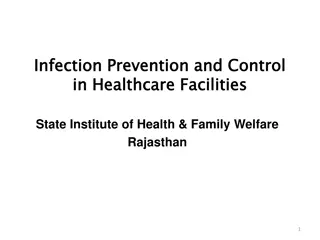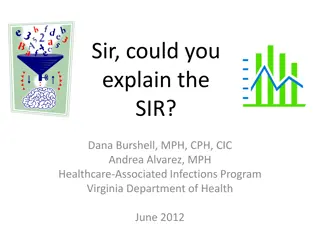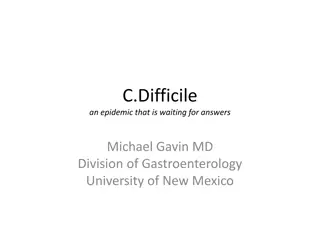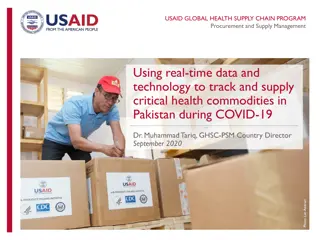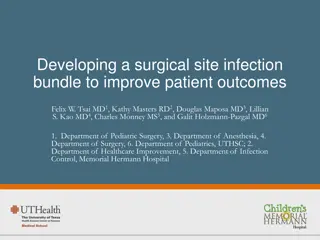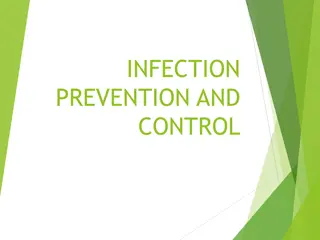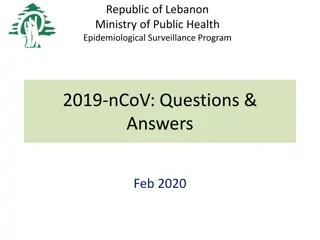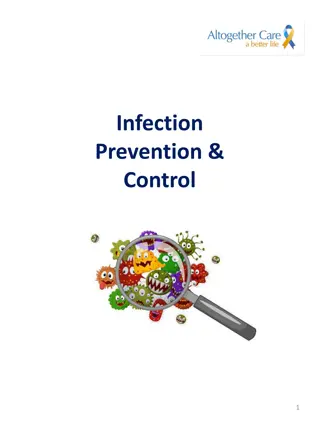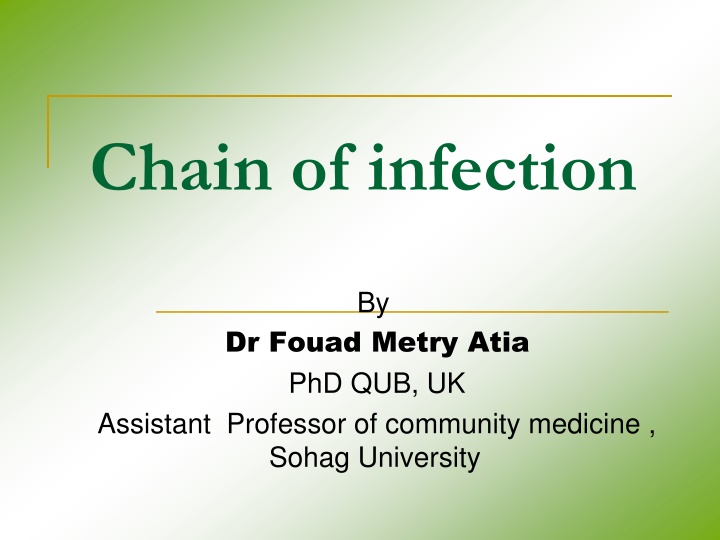
Chain of Infection
Explore the chain of infection and various modes of transmission, including direct and indirect contact, droplet transmission, and transplacental transmission. Learn how infectious diseases spread and the importance of prevention measures.
Download Presentation

Please find below an Image/Link to download the presentation.
The content on the website is provided AS IS for your information and personal use only. It may not be sold, licensed, or shared on other websites without obtaining consent from the author. If you encounter any issues during the download, it is possible that the publisher has removed the file from their server.
You are allowed to download the files provided on this website for personal or commercial use, subject to the condition that they are used lawfully. All files are the property of their respective owners.
The content on the website is provided AS IS for your information and personal use only. It may not be sold, licensed, or shared on other websites without obtaining consent from the author.
E N D
Presentation Transcript
Chain of infection By Dr Fouad Metry Atia PhD QUB, UK Assistant Professor of community medicine , Sohag University
IV. MODES OF TRANSMISSION Include: 1. Contact Transmission 2. Common vehicle transmission 3. Vectors transmission 4. Air borne transmission
1.Contact Transmission Direct Contact: In the case of direct contact transmission there is actual continuity between the infected person and the susceptible host as in sexual intercourse, kissing, or other contagious personal associations. Examples are the group of venereal diseases, scabies, diphtheria, rabies and infectious mononucleosis.
Indirect Contact: In this case transmission occurs through touching contaminated objects such as toys, handkerchiefs, fomites, soiled clothing or bedding. The infectious agent is then transmitted to the hand and/or mouth of the suscebtiple host, or passes through abraded skin or mucous membranes. In addition, surgical instruments and dressings if contaminated play a role in the transmission of infection to surgical wounds. The use of common towels is also important
Droplet transmission: The susceptible gets infected through direct inhalation of droplet spray of an infected person during talking, sneezing or coughing directly to the mouth, nose or the conjunctiva. Such droplets usually travel not more than three feets from the reservoir. Transmission by droplet is categorized under contact transmission since it involves reasonably close association between two or more persons.
Examples include most of the diseases of the respiratory tract and those systemic diseases in which the organism is present in the upper respiratory tract as measles. Droplets have their importance also in surgical sepsis and in puerperal fevers and the use of masks in these cases is of great value if used properly.
Transplacental: In some diseases of the mother e.g. syphilis, the causative agent may reach the foetus transplacentally from the blood of the mother.
2. Common vehicle transmission: A vehicle of infection may be water, food, milk, biological products (e.g. serum and plasma) or any other substance serving as an intermediate means by which an infectious agent is transmitted from a reservoir and introduced into a susceptible host
Ingestion: As in the case of food and drinks e.g. dysentries, typhoid, food poisoning and cholera. Inoculation: As in using plasma, serum or blood as viral hepatitis and syphilis.
Deposition: Pathogenic microorganisms or the infective stage of a parasite (bilharzia) if deposited on the skin or on the mucous membrane of the ear, nasal sinuses or the conjunctiva e.g. during swimming may lead to the development of otitis media, sinusitis or conjunctivitis.
3. Vectors: Vectors are insects that play an important role in the transmission of human and animal diseases.
Vector transmission may be Mechanical transmission: The insect only acts as a passive carrier of the etiologic agent of the disease picking the microorganisms from the excreta or discharges of man or animal and depositing them on food or tissues. The best example is the role played by house flies in the transmission of enteric diseases, ophthalmias and wound infection.
Biologieal transmission: This may be differentited into : Propagative : in which simple multiplication of the agent occurs in the vector. Examples include plague bacilli in fleas, rickettsia prowazeki in lice and the yellow fever virus in aedes mosquitoes.
Cyclo propagative : in this case the infective organisms undergo changes and multiply within the vector. The best example is the transmission of malaria parasites by anopheline mosquitoes. Cyclodevelopmental: in this case the agent only develops within the vector and no multiplication takes place. The best example is the role of culicine mosquitoes in the transmission of filariasis.
4. Air borne Droplet Nuclei: Droplet transmission occurs through the inhalation of the small residues that result from evaporation of droplets and remain suspended in the air of enclosed spaces. Examples of diseases transmitted in this way include pulmonary tuberculosis and surgical sepsis.
Dust: Large droplets carrying the microorganisms usually settle down on the floor around cases or carriers or on their body surface, clothes bedding, or other articles.
The mucous particles or droplets dry off and the dried residues containing microorganisms, especially those particles less than 10 microns, could be whisked from these articles into the air during activities such as making beds or cleaning the floor, or even by the simple movements of human beings and then could be inhaled by the susceptible individuals or may settle down on open wounds. The best examples for this method is in the transmission of staphylococci, tubercle bacilli, and rickettsia burnetti.
V. PORTALS OF ENTRY (INLETS) Infectious agents enter the body of the susceptible through various inlets which can be classified into: Natural inlets: Include the mouth, nose, rectum, conjunctival sac, and urethra. Un-natural inlets: Include inoculation through blood sucking insects or through injections.
It is worth noticing that the portal of inlet may determine the type of pathology that may result. For instance, in case of tuberculosis and anthrax if the inlet is through the respiratory system the pulmonary types of these diseases are the result. On the other hand, if the organism enters via the intestinal tract the intestinal types are the result and if the organisms happen to enter through the skin the result would be the dermal types of these diseases.
VI. SUSCEPTIBLE HOST A susceptible host is a person or an animal presumably not possessing immunity against a particular pathogenic agent and for that reason is liable to contract the disease if exposed to its causative agent. Exposure to infective microorganisms may or may not result in disease.
The outcome of infection depends on the following factors : Pathogenicity and virulence of the micro organism. Antigenic power of the micro-organism. Duration of infectious state (period of communicability). Ease of communicability of the disease.
Pathogenicity and virulence of the microorganism: Pathogenicity means the capacity of the microorganism to produce specific pathologic effects . Pathogenicity can be measured by the ratio of clinical to subclinical cases. The higher the pathogenicity, the higher the proportion of clinical cases and the lower the proportion of subclinical cases.
Virulence is used to point out differences in pathogenicity (severity of the disease) within a group of microorganisms e.g. diphtheria bacilli are pathogenic to man but some strains (diphtheria gravis) are more virulent than others. Virulanvnce is measured by the case fatality rate. The more the virulence the higher will be the case fatality rate.
Antigenic power of the microorganism: This means the ability of the microorganism to initiate the develop antibodies and the associated immunity against the same type of infection. In practice, the antlgenic power could be measured by:
The second attacks frequency : i.e. how frequent one gets two or more attacks of a certain disease. Second attacks in diseases like measles, mumps and chicken pox are not recorded, indicating a high antigenic power of their causative agents. On the other hand, common cold and other upper respiratory infections and also in diseases like syphilis and gonorrhea reinfection can occur repeatedly in the same person, indicating a poor antigenic power of their causative agents.
Age specific attack rate: if the attack rate is plotted against age, it is found that in diseases caused by microorganisms of a high antigenic power e.g. measles, there is a drop in the attack rate after the young age groups. This is not the picture with diseases caused by micro-organisms of a weak antigenic power e.g. shigellosis.
Period of communicability (Duration of infectious state): It is the duration of the infectious state and is defined as the time or times during which the causative agent may be transferred directly or indirectly from an infected person or animal to man.
The duration of the infectious state may be short as the case in mumps or protracted as in typhoid fever where about 3% of the cases become carries for the remainder of their lives.
Ease of communicability of the disease: The ease of communicability of a particular disease is measured by the secondary attack rate. It means the attack rate of a specific disease among the remaining susceptibles within a stated period of time (usually the incubation period) after its introduction by an initial case (index case).
For example, in a class room of 30 students one get measles and after two weeks 15 children fell with the disease. The medical records show that 4 students had measles before. No. of secondary cases The secondary attack rate = --------------------------- x 100 No. of susceptible 15 = -------------- x 100 = 60% 30 (4+ 1)




